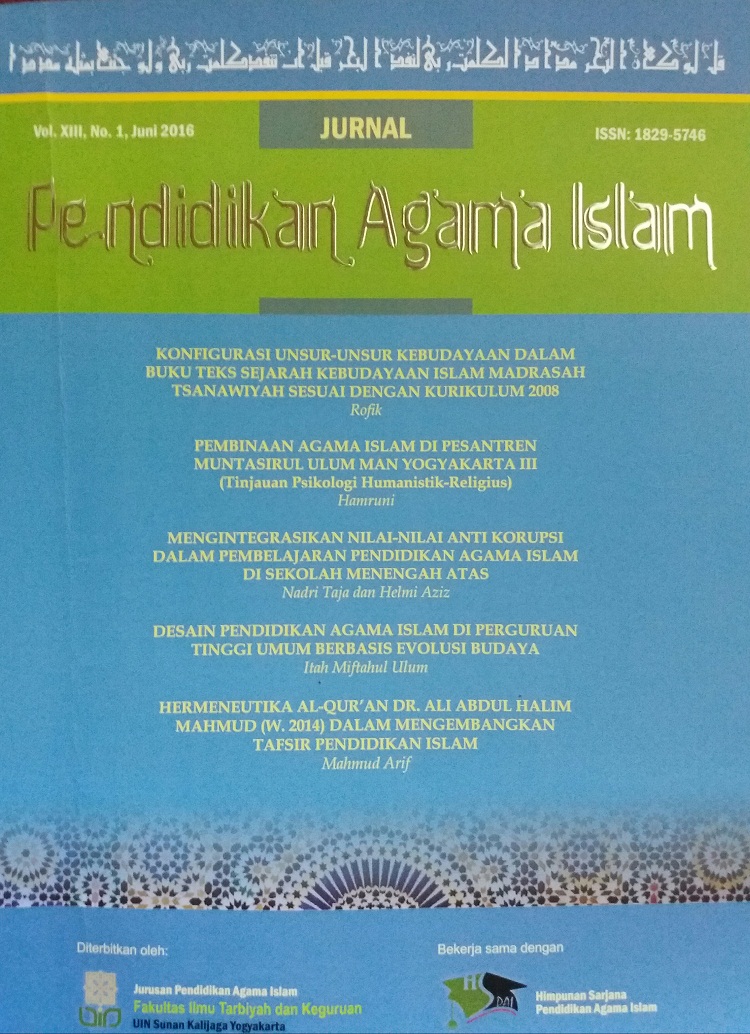DESAIN PENDIDIKAN AGAMA ISLAM DI PERGURUAN TINGGI UMUM BERBASIS EVOLUSI BUDAYA
##plugins.themes.bootstrap3.article.main##
Abstract
Purpose of this study was to determine relationship of al-Quran and al-Sunnah with the rules of
fqh al-’ādatu muhakkamah and applicability in Islamic Religious Education (PAI) in Public Higher
Education (PTU), with no “scrape” exhausted culture or on the contrary, so intertwined harmony
between Muslims and adherents of culture in society.
Method used in study is content analysis, which is used to understand the rules of Arabic in verses of
the Koran and Hadith of the Prophet of Islam and culture. In addition, also used discourse analysis,
which is to connect the to the context as meaning implied relating to circumstances at time of verses of
Koran and Hadith of Prophet lowered.
Results obtained from study of literature, that Islam gives the option to mankind to determine other
options, recognize and protect the right to life adherents of a different culture, and Islam is a universal
religion that has characteristics of al-wāqi’iyah (realistic), and can cooperate in preventing damage and
build community.
Keywords: Islamic religion and culture, al-’ādathu muhakkamah, Islamic Religious Education.
Downloads
##plugins.themes.bootstrap3.article.details##
Copyright
Copyright Notice
Authors who publish with this journal agree to the following terms:
- Authors retain copyright and grant the journal right of first publication with the work simultaneously licensed under a Creative Commons Attribution License that allows others to share the work with an acknowledgement of the work's authorship and initial publication in this journal.
- Authors are able to enter into separate, additional contractual arrangements for the non-exclusive distribution of the journal's published version of the work (e.g., post it to an institutional repository or publish it in a book), with an acknowledgement of its initial publication in this journal.
- Authors are permitted and encouraged to post their work online (e.g., in institutional repositories or on their website) prior to and during the submission process, as it can lead to productive exchanges, as well as earlier and greater citation of published work.
606
Views
1048
Downloads





